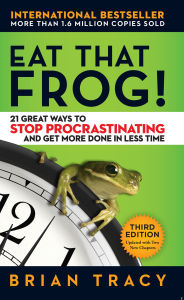In this #1 New York Times bestseller, the CEO of Starbucks recounts the story and leadership lessons behind the global coffee company's comeback and continued success.
In 2008, Howard Schultz decided to return as the CEO of Starbucks to help restore its financial health and bring the company back to its core values. In Onward, he shares this remarkable story, revealing how, during one of the most tumultuous economic periods in American history, Starbucks again achieved profitability and sustainability without sacrificing humanity.
Offering you a snapshot of the recession that left no company unscathed, the book shows in riveting detail how one company struggled and recreated itself in the midst of it all. In addition, you’ll get an inside look into Schultz's central leadership philosophy: It's not about winning, it’s about the right way to win.
Onward is a compelling, candid narrative documenting the maturing of a brand as well as a businessman. Ultimately, Schultz gives you a sense of hope that, no matter how tough times get, the future can be more successful than the past.
Read More
From the Publisher
“Personal, suspenseful, and surprisingly open . . . [Schultz’s] sequel to the founding of Starbucks is grittier, more gripping, and dramatic, and his voice is winning and authentic. this is a must-read for anyone interested in leadership, management, or the quest to connect a brand with the consumer.” —Publishers Weekly, starred review
“Through the lens of his personal leadership journey, with all of its dizzying ups and agonizing downs, Howard Schultz has written, with aching honesty and passion, the single most important book on leadership and change for our time and for every generation of leaders.” —Warren Bennis, Distinguished Professor of Business, University of Southern California, and author of Still Surprised: A Memoir of a Life in Leadership
Publishers Weekly
In 2000, Starbuck's founder and CEO Schultz (Pour Your Heart into It) stepped down from daily oversight of the company and assumed the role of chairman. Eight years later, in the midst of the recession and a period of decline unprecedented in the company's recent history, Schultz—feeling that the soul of his brand was at risk—returned to the CEO post. In this personal, suspenseful, and surprisingly open account, Schultz traces his own journey to help Starbucks reclaim its original customer-centric values and mission while aggressively innovating and embracing the changing landscape of technology. From the famous leaked memo that exposed his criticisms of Starbucks to new product strategies and rollouts, Schultz bares all about the painful yet often exhilarating steps he had to take to turn the company around. Peppered with stories from his childhood in tough Canarsie, N.Y., neighborhoods, his sequel to the founding of Starbucks is grittier, more gripping, and dramatic, and his voice is winning and authentic. This is a must-read for anyone interested in leadership, management, or the quest to connect a brand with the consumer. (Mar.)
The Midwest Book Review
For anyone looking for insights . . . Onward is essential reading. . . . Schultz comes across in these pages as a genuinely, even disarmingly, nice guy . . . you find yourself cheering him on.”
—Fortune
Fortune
Personal, suspenseful, and surprisingly open. . . . A must for anyone interested in leadership, management, or the quest to connect a brand with the consumer.”
—Publishers Weekly [starred review]
Kirkus Reviews
With the assistance of former Forbes journalist Gordon (Closing the Engagement Gap, 2008, etc.), the CEO of Starbucks explains how he collaborated with a cast of thousands to rejuvenate a declining business.
In 2000, Schultz (Pour Your Heart Into It: How Starbucks Built a Company One Cup at a Time, 1999) surrendered the CEO position but remained as chairman, focusing on spreading the coffee products to other nations, especially China. He was comfortable with his immediate successor, chosen from inside Starbucks, but the next CEO arrived from outside. Though Schultz liked him and respected his work ethic, the quality of the product and the service began to drop and the company's financial growth stagnated. Alarmed, Schultz decided to return for a second act as CEO. In his first book, the author described the early years of the company, with a heavy emphasis on ideals. Here, he looks back occasionally at those earlier years, but mostly provides a chronological account of what happened from 2007 to 2010. The detail is immense, and the cast of characters can feel overwhelming. Overall, though, the chronological account contains enough revelations and suspense to keep readers engaged. Schultz does not dodge outside criticisms of his performance, nor does he eschew self-criticism. For many ofitsemployees and customers, Starbucks is a sacred place that fills needs of connectedness and companionship. Schultz reprints correspondence from both employees and customers that demonstrate the special placethat local Starbucks stores hold in the hearts and minds of so many. The author pledges to donate the book's proceeds to supportneighborhoods where stores are located and to provide financial relief to employees facing emergencies.
Anengaging account by a wealthy executive who sounds sincere and seems approachable.
Read More
















